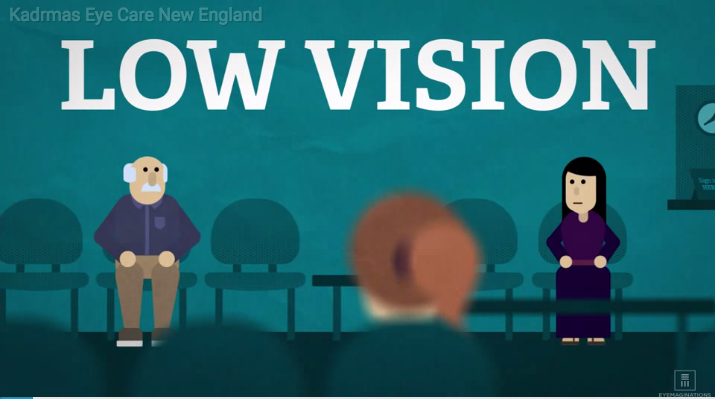|
Low vision is a loss of eyesight not caused by normal aging that makes everyday activities and tasks, such as reading, writing, cooking, and driving, difficult. It can also make watching TV or recognizing people’s faces difficult.
Low vision can be caused by a variety of eye diseases, including AMD, glaucoma, and diabetic eye disease, eye injuries, cancer of the eye, albinism, or brain injury. And while low vision can occur at any age, it is more common in older people.
Two common patterns of vision loss occur with low vision:
Further, low vision can involve or cause other types of vision loss, including:
Finally, low vision can be caused or affected by visual processing errors. Our sight is made possible by a series of events, starting with light entering our eye. Our lens focuses that light on the retina, which converts the light rays into signals that are sent to our brain via the optic nerve. The brain then interprets these signals, creating the images we see. Any interruption or problems with any of these steps in the process can affect vision in various ways, including vision loss or low vision.
Low vision cannot be corrected with surgery, medicine, contact lenses, or glasses. It is permanent, and as a result, it makes everyday activities difficult. As such, learning how to manage and function with low vision becomes an essential part of life for those diagnosed with it.
Diagnosis of low vision is made through a complete eye exam. Your eye doctor will assess your vision, as well as your eye health, and determine if you have any underlying eye diseases that are causing your low vision.
Learning new ways of using remaining vision to complete daily tasks and maintain quality of life is vital for people with low vision. Your ophthalmologist will discuss these accommodations with you, as well as recommend or prescribe any low vision assistive devices that may help you with your daily activities.
Your ophthalmologist may also recommend that you work with a low vision rehabilitation specialist. Low vision rehabilitation specialists will work with you to develop low vision techniques to manage life with low vision, including making things brighter and bigger, organizing and labeling, developing driving strategies if you are still able to drive, and using low vision aids.
Many low vision aids exist today, including:
Low vision rehabilitation specialists will not only help you find ways to manage and accomplish your daily activities, but also help you find ways to do the things you enjoy. Having low vision doesn’t mean an end to activities you enjoy, and your low vision rehabilitation specialist will help you find ways to participate in life, such as joining social groups, volunteering, and playing certain sports such as golf.
Finally, a wide variety of resources exist for people living with low vision. To learn about some of these resources, visit the American Academy of Ophthalmology’s Low Vision Resources page.
If you are concerned about your vision and eye health or that of a loved one, please call us today to schedule an appointment.
Comments are closed.
|
EYE HEALTH BLOGCategories
All
Archives
July 2024
|
|
Kadrmas Eye Care New England
55 Commerce Way, Plymouth, MA 02360
14 Tobey Road, Wareham, MA 02571 133 Falmouth Road (Rt 28), Mashpee, MA 02649 |
Phone Number:
1-508-746-8600 Hours: Monday through Friday — 8 AM – 4:30 PM |


 RSS Feed
RSS Feed
